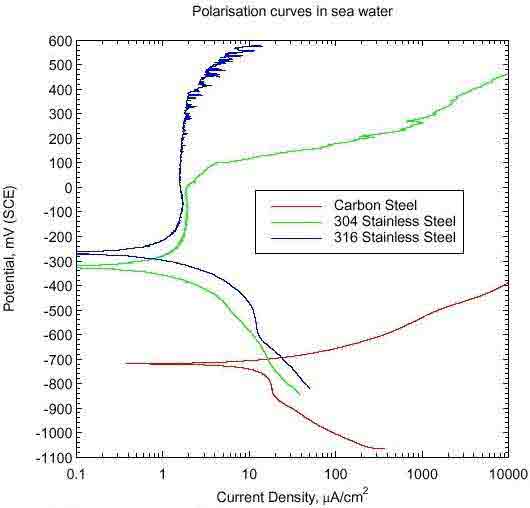Stainless Steels and Alloys: Why They Resist Corrosion
and How They Fail*
If we compare the corrosion behavior of stainless steels
and carbon steel in natural sea water (Fig.4), the effects of alloy composition
are even more pronounced. Both 304 and 316 stainless steels showed natural
passivation behavior in sea water with similar passive current density
of ~ 1 uA/cm2. The
passive potential range for 316 (Mo-alloyed) is significantly broader than
that of 304 (Mo-free) while the conventional carbon steel showed no passivation
at all. The substantial difference in the corrosion potentials among the
three steels is entirely due to the different compositions! The corrosion
rates determined from Fig.4 are roughly 0.010 mm/y for 316/304 stainless
steels and 0.25 mm/y for carbon steel in natural sea water (taken from
Tuas, Jurong, Singapore).

Fig.4 Polarization Behavior of Stainless Steels and Carbon
Steel in Natural Sea Water [5]
|
